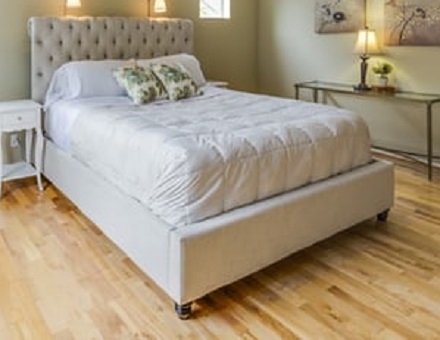Bed and mattress buying guide

There’s been an increase in online shopping. That’s fine for everyday items,but what about occasional buys? At the moment I’m thinking of beds, because that’s what I’ve been looking at this week and just bought.
The industry suggests buying a bed every 10 years while recognising that most people make a bed last 15 – 20 years. The Sleep Council suggest considering buying a new mattress after 7 years. We need advice; in the past we might have visited a bed supplier and received our advice from the retailer. We were quite comfortable taking advice from someone who was trying to sell us something.
In fact there is plenty of advice and many buyers guides online – we are posting buying guides ourselves now. Of course you should be sceptical of advice and reviews online, as well as the shop salesman
So Looking at beds ….
Given the importance of sleep to our health and general well being, experts suggest buying the biggest bed that the available space (and possibly budget) allows. Standard UK sizes are shown below (but check the dimensions on the suppliers website).
| Size | Width | Length |
| Small single | 2 ft 6 ins (75 ccm) | 6 ft 3 ins (190 cm) |
| Single | 3 ft (90 cm) | 6 ft 3 ins (190 cm) |
| Small double | 4 ft (120 cm) | 6 ft 3 ins (190 cm) |
| Double | 4 ft 6 ins (135 cm) | 6 ft 3 ins (190 cm) |
| King | 5 ft (150 cm) | 6 ft 6 ins (200 cm) |
| Superking | 6 ft (180 cm) | 6 ft 6 ins (200 cm) |
Other questions to ask:
What kind of slats do you prefer. Solid slats add to firmness, while sprung slats move slightly when compressed.
Do you need storage space. Ottoman beds lift up and provide storage under the bed. Divan beds can have drawers to provide storage space.
Do you prefer a wooden or metallic structure or a leather or fabric finish? What will suit your intended decor.
Mattresses
Mattresses may come as firm, medium or soft, though there is no industry standard or independent verification. Comfort is, of course, subjective, but people who sleep on their backs usually feel more comfortable with a firmer mattress. Medium mattresses are the most common choice. Opinions vary, but take advice if you have back problems.
Mattresses can be open sprung (with rows of springs inside), pocket sprung (the springs are in fabric, so they can adapt independently of each other to fit your body shape), combination (a mix of springs and foam) or memory foam (which moulds to body shape).
Don’t forget …
A mattress protector – your body can lose a pint of fluid overnight and shed a pound of skin a year. It is a good idea to protect your mattress from that!
Pillows: Your head weighs 11 pounds and needs support.
A bigger bed may need bigger sheets!
If buyng online, look at the sellers returns policy. Also consider how you’re going to dispose of your old bed.
A new mattress should be turned (flipped) and rotated (top to bottom) weekly for the first three months, and then monthly to spread the weight and prolong its life. It should be aired for three or four hours when new, and then for a couple of hours every now and then, perhaps when sheets are changed.
Useful links:
Bedtime for beds and mattresses (also pillows).
Netfurniture for bedroom furniture.

